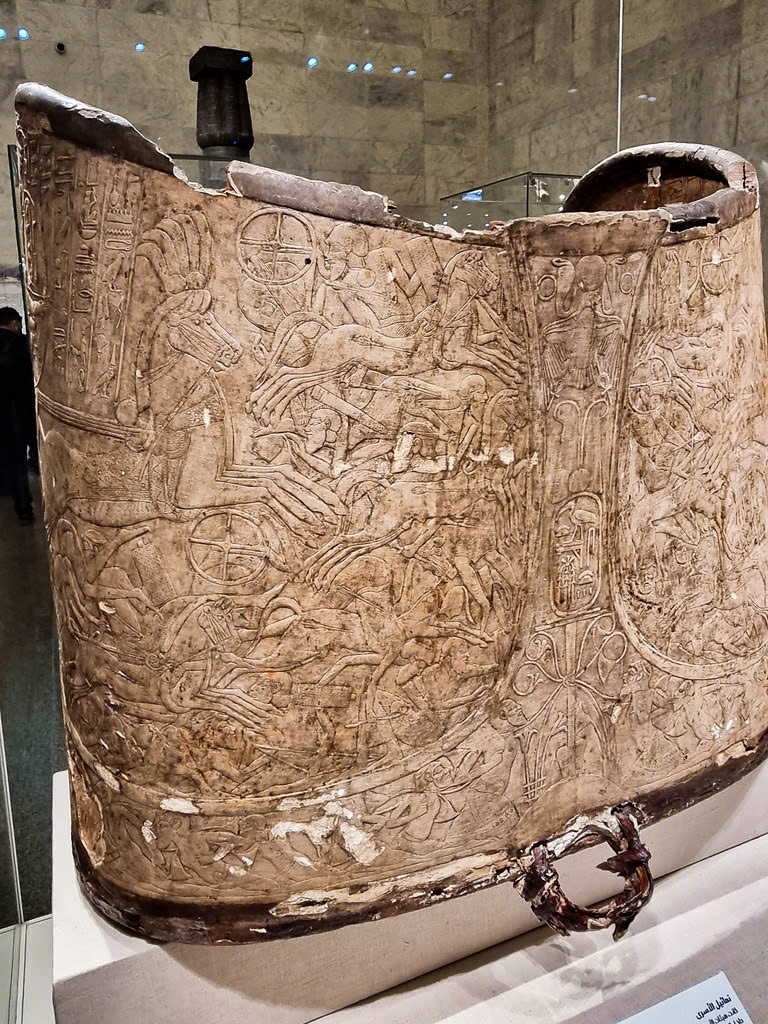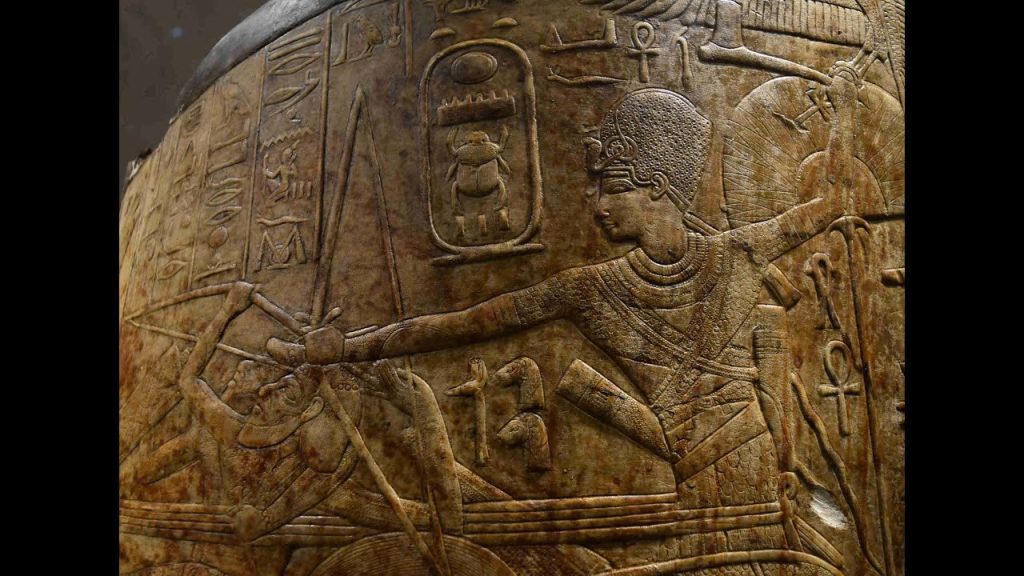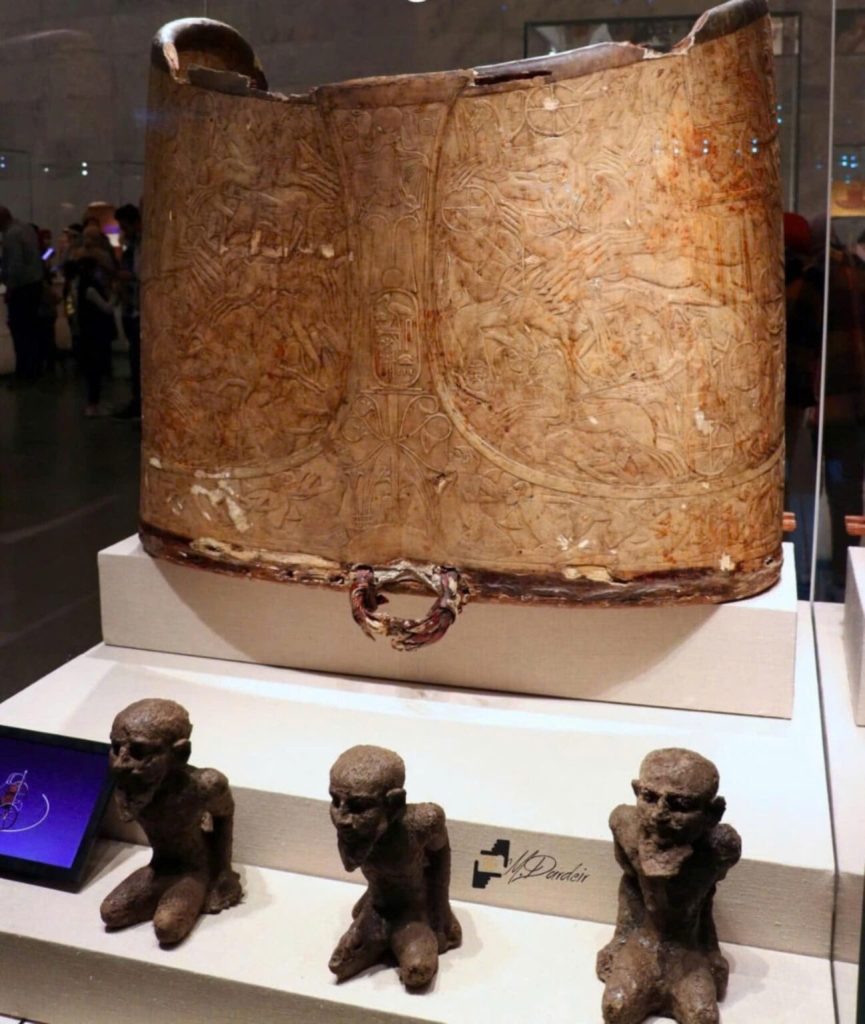In the heart of Egypt’s legendary Valley of the Kings, an astonishing archaeological discovery in 1903 redefined our understanding of ancient Egyptian military innovation and royal grandeur. It was here that the renowned archaeologist Howard Carter unearthed a breathtaking artifact in tomb KV 43 – the nearly 3,400-year-old chariot belonging to Pharaoh Thutmose IV. This extraordinary find not only captivated the imagination of historians but also illuminated the advanced craftsmanship and profound symbolism embedded in Egyptian culture during the New Kingdom period.

The chariot, preserved in remarkable condition, stands as a shining example of the ingenuity and precision of ancient Egyptian engineers. Constructed primarily from lightweight wood, its design prioritized performance, balancing speed with exceptional maneuverability. The deliberate selection of materials, paired with cutting-edge construction techniques of the time, highlights a deep understanding of mechanical principles, reflecting a society capable of complex technological achievements. The aerodynamic build and lightweight framework ensured that the chariot could withstand the demands of high-speed pursuits on the battlefield, while also being suitable for ceremonial grandeur.
What makes this artifact even more extraordinary is the exquisite craftsmanship evident in every detail of its construction. The surface of the chariot is adorned with intricate patterns that symbolize luxury, power, and divine authority. Ancient records suggest it may have been further embellished with gold and leather accents, underscoring the status of its royal owner. The craftsmanship of the 18th Dynasty reached its zenith in artifacts like this, demonstrating a unique blend of practicality and artistry. The innovative wheel and axle system, carefully engineered for stability and smooth handling, further reflects the technical prowess of ancient Egyptian artisans.
The chariot was more than a mode of transportation; it embodied the essence of the pharaoh’s divine authority. In ancient Egyptian culture, such vehicles were symbols of power, designed to command attention and inspire awe both in battle and in elaborate royal ceremonies. The chariot’s inclusion in the burial chamber of Thutmose IV underscores its cultural and spiritual significance. Egyptians believed that the pharaoh’s journey to the afterlife required the tools and symbols of his earthly power. By placing the chariot in the tomb, Thutmose IV’s subjects ensured that he would carry his royal status into eternity, continuing to reign as a divine figure beyond death.
Thutmose IV reigned during a pivotal era in Egypt’s history, from approximately 1400 to 1390 BCE. This period, marked by prosperity and relative peace, also saw significant military campaigns that expanded Egypt’s influence. Thutmose IV’s military achievements included expeditions against the Mitanni and in Nubia, both of which solidified Egypt’s dominance in the region. The design and function of his chariot offer a glimpse into the technological advancements that played a crucial role in establishing Egypt’s power during the New Kingdom period. These innovations not only enhanced Egypt’s military capabilities but also reinforced its cultural identity as a civilization at the forefront of technological and artistic progress.
The historical significance of the chariot is vast, offering a treasure trove of insights into ancient Egyptian society. Beyond its use in warfare, the chariot reflects the sophistication of Egyptian craftsmanship and the intricate relationship between technology, religion, and power. The 18th Dynasty, during which Thutmose IV ruled, was a time of unprecedented cultural and technological achievements, and artifacts like this chariot serve as enduring testaments to that legacy.

For modern scholars, the discovery of this chariot has become a cornerstone in understanding ancient Egyptian innovation. Its preservation provides invaluable clues about the materials, techniques, and cultural practices of the era. For example, the detailed construction of the chariot sheds light on the methods used by ancient craftsmen to create tools and vehicles that were both functional and symbolic. Additionally, the artifact offers a deeper understanding of how Egyptians viewed their rulers not merely as leaders but as divine figures whose authority was ordained by the gods.
As archaeologists and historians continue to study this remarkable piece of history, it promises to unveil even more secrets about one of the most fascinating periods in Egypt’s past. The chariot exemplifies how ancient societies combined technological innovation with artistic brilliance to produce objects of both practical use and immense symbolic significance. It stands as a powerful reminder of the ingenuity and cultural sophistication of a civilization that continues to inspire awe in modern times.
The story of the chariot from tomb KV 43 is not just a tale of ancient engineering; it is a window into the heart of Egyptian society. It reveals a culture that valued both the tangible and the transcendental, blending cutting-edge technology with deeply rooted spiritual beliefs. The chariot’s presence in Thutmose IV’s tomb speaks volumes about the importance of ensuring the pharaoh’s journey into the afterlife mirrored his earthly grandeur. In this sense, the chariot is more than an artifact; it is a narrative device that connects us to the past, telling the story of a civilization that was as advanced in its understanding of the material world as it was in its pursuit of spiritual enlightenment.

For readers today, the discovery of this artifact underscores the enduring importance of archaeology in uncovering the mysteries of ancient civilizations. The chariot of Thutmose IV serves as a bridge between the modern world and a distant past, offering a tangible link to a time when Egypt reigned supreme as a center of culture, innovation, and power. Through continued research and preservation efforts, this extraordinary artifact will remain a source of inspiration and education, ensuring that the legacy of Thutmose IV and the artisans who crafted his chariot will be remembered for generations to come.





